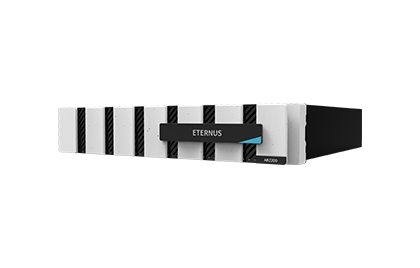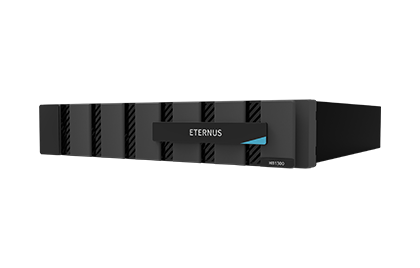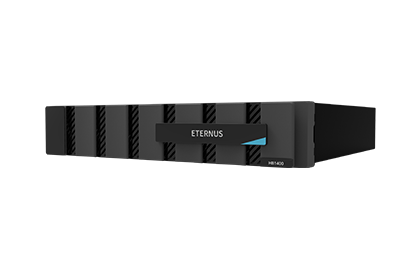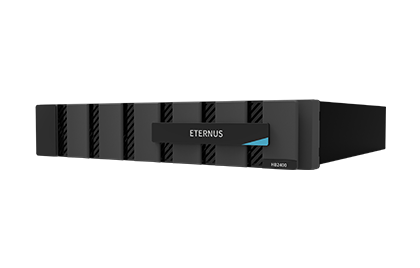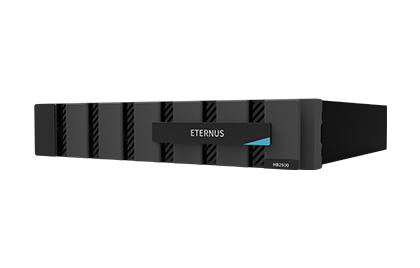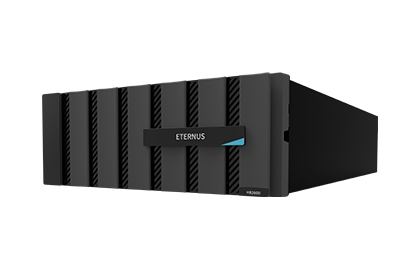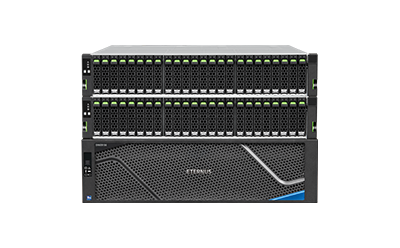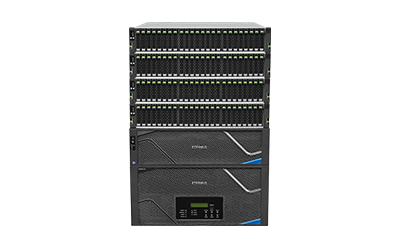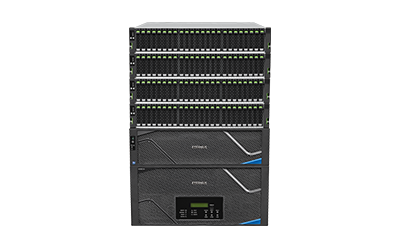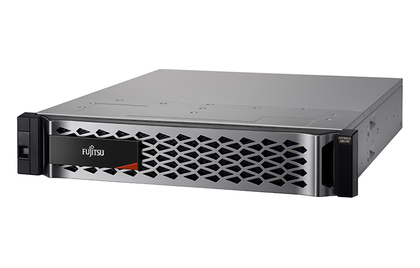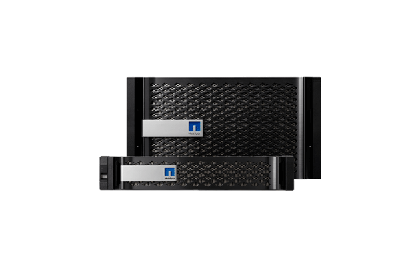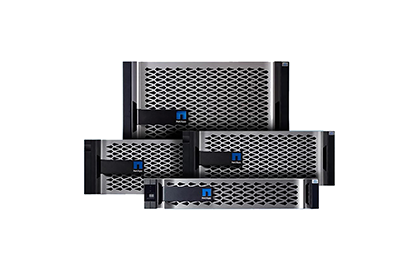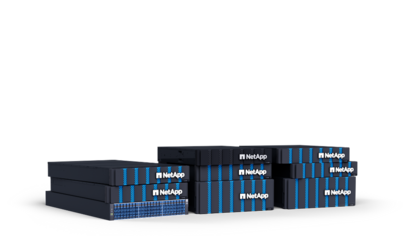Go beyond with primary storage

Primary Storage Solutions
Going beyond the limits with next-generation data storage
Within business, there has been a data explosion. And, with exponential data growth comes the need for new storage systems and solutions with minimum latency, uninterrupted access to data, and smart efficiency functions capable of making the right data available at the right time. Data availability and manageability are today’s differentiators and staying ahead in highly competitive markets means a fundamental change in how data is stored and managed. Your business success depends on your ability to capture, store, manage, consolidate, and monetize your data, and to do this you need to make the right storage choice. For many businesses, this will mean a shift from ‘this is the way we’ve always done things’ to a ‘no one size fits all’ approach.
Making the right storage choice – Traditional Storage, Hyper-converged Infrastructure(HCI) or Software-defined Storage (SDS)?
The Primary Storage portfolio is based on award-winning performance architectures
that deliver the fastest response times regardless of the workload. With our portfolio of data
storage solutions, we provide a one-stop-shop for all data storage needs across Traditional
Storage, Hyper-converged Infrastructure (HCI) and Software-defined Storage (SDS).

Traditional Storage
Traditional RAID storage solutions deliver predictable performance for organizations needing reliable storage operations for legacy applications and infrastructures, dedicated applications and databases/OLTP. Our solutions support a range of storage technologies - hybrid, All-Flash and NVMe All-Flash - which can be easily combined according to different data storage requirements. Integrated data protection capabilities include smooth migration, transparent failover and replication to ensure business continuity.

Software-defined storage (SDS)
SDS typically comes as a scale-out or hyper-scale system – to increase capacity and performance you simply add nodes into the overall storage pool of the system. The placement of the data and the management software of the system is distributed across all nodes. This makes scaling very easy and provides the flexibility to add capacity as needed without sacrificing performance. There is no need for capacity planning and forecasting – and theoretically, there is no limit to the capacity. The SDS concept is also optimally adopted to rapidly changing ecosystems with new-age workloads and edge-core-cloud-environments.

Hyper-converged infrastructure (HCI)
Hyper-converged Infrastructure solutions combine multiple elements - compute, storage and network - to form a harmonious high available infrastructure solution for organizations uncertain of their future storage and compute requirements.
Explore data storage solutions
Product type
NVMe support
Raw capacity
No. of drives
System memory
| ETERNUS AB2200 | ETERNUS HB1300 | ETERNUS HB1400 | ETERNUS HB2400 | ETERNUS HB2500 | ETERNUS HB2600 | ETERNUS DX200 S5 | ETERNUS DX600 S6 | ETERNUS DX8900 S6 | ETERNUS DX900 S6 | ETERNUS AB3100 | ETERNUS AB6100 | NetApp FAS Storage Arrays | NetApp All-Flash FAS | NetApp All-Flash SAN Arrays | NetApp StorageGRID Data Storage | Qumulo Data Storage | |
|---|---|---|---|---|---|---|---|---|---|---|---|---|---|---|---|---|---|
| Host Interfaces |
FC (8,16,32Gbit/s) iSCSI (10, 25Gbit/s, 10GBASE-T) SAS (12 Gbit/s) |
FC (8,16,32Gbit/s) iSCSI (10 Gbit/s, 10 GBASE-T) |
FC (8,16,32Gbit/s) iSCSI (10, 25Gbit/s, 10GBASE-T) |
FC (8,16,32Gbit/s) iSCSI (10, 25Gbit/s, 10GBASE-T) SAS (12 Gbit/s) |
FC (8,16,32Gbit/s) iSCSI (10, 25Gbit/s, 10GBASE-T) SAS (12 Gbit/s) |
FC (8,16,32Gbit/s) iSCSI (10, 25Gbit/s, 10GBASE-T) SAS (12 Gbit/s) |
Fibre Channel (16 Gbit/s, 32Gbit/s) iSCSI (10 Gbit/s [10GBase-SR, 10GBase-CR, 10GBase-T], 1 Gbit/s) SAS (12 Gbit/s) Ethernet (10 Gbit/s, 1 Gbit/s) |
Fibre Channel (64 Gbit/s, 32 Gbit/s, 16 Gbit/s) iSCSI (10Gbit/s [10GBASE-SR, 10GBASE-CR]) |
Fibre Channel (64 Gbit/s, 32 Gbit/s, 16 Gbit/s) iSCSI (10Gbit/s [10GBASE-SR], [10GBASE-CR]) |
Fibre Channel (64 Gbit/s, 32 Gbit/s, 16 Gbit/s) iSCSI (10Gbit/s [10GBASE-SR], [10GBASE-CR]) |
FC (32Gbit/s) NVMe over FC (32Gbit/s) NVMe over InfiniBand (100Gbit/s) NVMe over RoCE (100Gbit/s) iSCSI (10, 25Gbit/s) |
FC (8,16,32Gbit/s) NVMe over FC (32Gbit/s) NVMe over InfiniBand (100Gbit/s) NVMe over RoCE (100Gbit/s) iSCSI (10, 25Gbit/s) |
- | - | - | Ethernet (10 GbE / 25 GbE / 40 GbE / 100 GbE) | - |
| Maximum Disk Drives | 120 | 24 | 48 | 252 | 264 | 300 | 264 | 960 | 3,072 | 2,304 | - | - | - | - | - | - | - |
| Maximum Storage Capacity | 1,836 TB | 528 TB | 194.4 TB | 5,544 TB | 5,647.2 TB | 6,600 TB | - | - | - | - | 5,647.2 TB | 9,607.2 TB | - | 702,700 TB | 69 PB | 960 TB | - |
| No. of host interfaces |
4 Port [iSCSI (25Gbit/s)] 8 Port [FC (32Gbit/s)] 8 Port [iSCSI (10GBase-T)] 8 Port [SAS (12Gbit/s)] |
4 Port [iSCSI (25Gbit/s)] 8 Port [FC (32Gbit/s)] 8 Port [iSCSI (10GBase-T)] |
4 Port [iSCSI (25Gbit/s)] 8 Port [FC (32Gbit/s)] 8 Port [iSCSI (10GBase-T)] |
4 Port [iSCSI (25Gbit/s)] 8 Port [FC (32Gbit/s)] 8 Port [Ether (10GBase-T)] 8 Port [SAS (12Gbit/s)] |
4 Port [iSCSI (25Gbit/s)] 8 Port [FC (32Gbit/s)] 8 Port [iSCSI (10GBase-T)] 8 Port [SAS (12Gbit/s)] |
4 Port [iSCSI (25Gbit/s)] 8 Port [FC (32Gbit/s)] 8 Port [iSCSI (10GBase-T)] 8 Port [SAS (12Gbit/s)] |
4-16 ports [FC(16Gbit/s)], 8/16 ports [Ethernet(1Gbit/s)], 4/8 ports [FC(32Gbit/s), iSCSI(10Gbit/s, 1Gbit/s), SAS (12Gbit/s), Ethernet(10Gbit/s)] | 4-32 ports [FC(64Gbit/s, 32Gbit/s,16Gbit/s), 4-16 ports [iSCSI(10Gbit/s)] |
4-256 ports [FC(64Gbit/s, 32Gbit/s, 16Gbit/s)] 4-128 ports [iSCSI(10Gbit/s)] |
4-64 ports [FC(64Gbit/s, 32Gbit/s,16Gbit/s)], 4-32 ports [iSCSI(10Gbit/s)] | - | - | - | - | - | - | - |
| Max. no. of hosts | 128 | 128 | 128 | 128 | 128 | 128 | 1,024 | 4,096 | 8,192 | 8,192 | 512 | 512 | - | - | - | - | - |
| Supported RAID levels | 0, 1, 1+0, 3, 5, 6, DDP | 0, 1, 1+0, 3, 5, 6, DDP | 0, 1, 1+0, 3, 5, 6, DDP | 0, 1, 1+0, 3, 5, 6, DDP | 0, 1, 1+0, 3, 5, 6, DDP | 0, 1, 1+0, 3, 5, 6, DDP | 0, 1, 1+0, 5, 5+0, 6 | 0, 1, 1+0, 5, 5+0, 6 | 0, 1, 1+0, 5, 5+0, 6 | 0, 1, 1+0, 5, 5+0, 6 | 0, 1, 1+0, 3, 5, 6, DDP | 0, 1, 1+0, 3, 5, 6, DDP | - | - | - | - | - |
| Drive interface | 12G SAS(MiniSAS HD) | 12G SAS(MiniSAS HD) | 12G SAS(MiniSAS HD) | 12G SAS(MiniSAS HD) | 12G SAS(MiniSAS HD) | 12G SAS(MiniSAS HD) | Serial Attached SCSI (12 Gbit/s) | NVMe (16 Gbit/s), SAS (12 Gbit/s) | NVMe (16 Gbit/s), SAS (12 Gbit/s) | NVMe (16 Gbit/s), SAS (12 Gbit/s) | NVMe, SAS | NVMe,SAS | - | - | - | - | - |
| Thin Provisioning | Yes | Yes | Yes | Yes | Yes | Yes | Yes | Yes | Yes | Yes | No | - | - | - | - | - | - |
| Remote Copy functionality | Synchronous and asynchronous | Asynchronous(Optional) | Asynchronous(Optional) | Synchronous and asynchronous | Synchronous and asynchronous | Synchronous and asynchronous | Synchronous and asynchronous | Synchronous and asynchronous | Synchronous and asynchronous | Synchronous and asynchronous | - | - | - | - | - | - | - |
| Max. no. of SSDs | - | 8 | 8 | 120 | 120 | 120 | unlimited | unlimited | unlimited | unlimited | - | - | - | 5760 | - | - | - |
| Type | - | - | - | - | - | - | Unified disk storage system for small and mid-range enterprises | Block disk storage system for small and mid-range enterprises | High-end disk storage system for large enterprises | Block disk storage system for small and mid-range enterprises | - | - | - | - | - | - | - |
| Latency | - | - | - | - | - | - | 140µsec (Read), 60µsec (Write) | Less than 1ms | Less than 1ms | Less than 1ms | - | - | - | - | - | - | - |
| Sequential access performance | - | - | - | - | - | - |
11,000 MB/s (128KB Read) 4,400 MB/s (128KB Write) |
44,000 MB/s (128KB Read) 22,000 MB/s (128KB Write) |
196,000 MB/s (128KB Read), 72,000 MB/s (128KB Write) |
88,000 MB/s (128KB Read) 44,000 MB/s (128KB Write) |
- | - | - | - | - | - | - |
| Random access performance | - | - | - | - | - | - |
530,000 IOPS (8KB Read) 230,000 IOPS (8KB Write) |
950,000 IOPS (8KB Read) 410,000 IOPS (8KB Write) |
3,500,000 IOPS (8KB Read), 2,200,000 IOPS (8KB Write) |
1,800,000 IOPS (8KB Read) 960,000 IOPS (8KB Write) |
- | - | - | - | - | - | - |
| Maximum Storage Capacity HDD | - | - | - | - | - | - | 4,752 TB | 8,424 TB | 26 PB | 20,304 TB | - | - | - | - | - | - | - |
| Maximum Storage Capacity SSD | - | - | - | - | - | - | 8,110 TB | 29,123 TB | 91 PB | 70,042 TB | 1,836.0 TB | - | - | - | - | - | - |
| Automated Storage Tiering | - | - | - | - | - | - | Yes | Yes | Yes | Yes | - | - | - | - | - | - | - |
| Max. drives per HA pair | - | - | - | - | - | - | - | - | - | - | - | - | 1,440 | - | - | - | - |
| Max . raw capacity in cluster | - | - | - | - | - | - | - | - | - | - | - | - | 176000 TB | - | - | - | - |
| Maximum Storage Capacity (HA Pair) | - | - | - | - | - | - | - | - | - | - | - | - | 14,700 TB | - | - | - | - |
| Max. scale-out nodes | - | - | - | - | - | - | - | - | - | - | - | - | - | 24 | 12 | - | - |
Simplify operations with All-in-one Storage Solutions
We are your single point-of-contact for providing comprehensive data solutions for various use-cases. By combining ETERNUS storage systems with products from partners and our services, we are successfully delivering end to end storage solutions for all data scenarios
